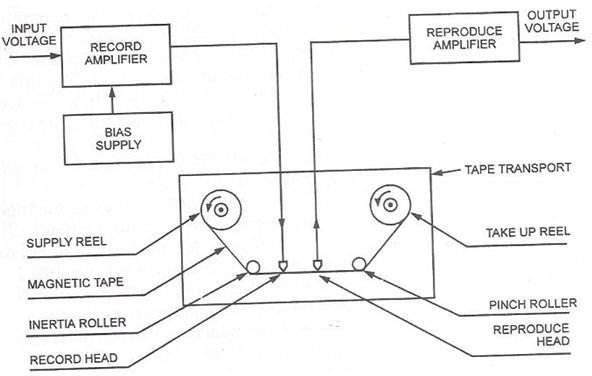How does a tape recorder work? - Learn about the working of a cassette player
Introduction
We have been learning about the working principle of commonly used household devices such as the
We will continue the discussion by learning about another device which is a major source of entertainment in most households, namely a tape recorder. Agreed that with the advent of the computer age and the continuous downslide of the memory prices, we are mostly switching over to digital storage media such as hard drives, flash drives and so forth. But still there are a large number of people who use the magnetic tape recorders to play back and listen to audio and video content. But have you ever thought how your voice is stored on a thin strip made of some magnetic material and how is it replayed from there? This article explains how does a magnetic tape recorder work and what is the technology behind it.
The Magnetic Tape
Before actually going into the details of the magnetic tape recorder, I would like to talk a bit about the tape which is used for this purpose. Actually the tape is made out of a special type of plastic material which is stable and can withstand continuous rubbing against the head. Normally this material is either PVC or Mylar which are quite resistant to wear and stretching which is necessary for the tape to remain useful for a long period of time. On top of this plastic base, there is a thin layer of magnetic material, usually Iron Oxide. The particles of this magnetic material are shaped in the form of tiny needles and occupy the top portion of the plastic base. The typical thickness of the tape is of the order of 25 micro-meters.
The Basic Arrangement
The basic circuit of a magnetic recording and playback system is quite simple and can be understood by seeing the sketch below which shows the entire arrangement. Of course this is a highly simplified sketch without the inside nuts and bolts, yet it is useful to take a broad view of the system.
As you can see, the entire system consists
ts of two portions – a mechanical arrangement to make the magnetic tape move across two points, and an electrical system which does the real job. The mechanical movement is achieved with the help of motor drive and a combination of rollers and belts. The electrical part is taken care of by appropriate circuits which do the work of recording, playback and amplification of sound. There are two heads which are used for recording and playback of the signals respectively.
Recording and Playback
The basic principle of operation is quite simple. As the tape rubs against the recording head, it applies a magnetic field which is proportional to the input signal. This signal orients the magnetic particles in a specific format which acts as indicators to the pattern of signal stored. When the playback head rubs against the tape, the signal is reproduced since now the particles induce similar magnetic patterns in the head. If you want to read more technical details about this process you can refer to the next article on this topic (coming soon and will be linked here).
Its Not Over
If you have concluded that with the advent of the digital age, the era of magnetic tapes is over, let me tell you that it is far from the truth. Magnetic tapes are still popular in several areas such as
- medical research
- patient monitoring
- surveillance
- spying
- production control
- industrial research
and so on. Certainly there might be certain advantages of using magnetic tapes which make them so popular till date. We will learn about them in a later article.
References & Image Credits
Gupta, J.B. (2007) Electronic Measurements & Control. 5th edn. Delhi: S.K. Kataria & Sons Publishers
